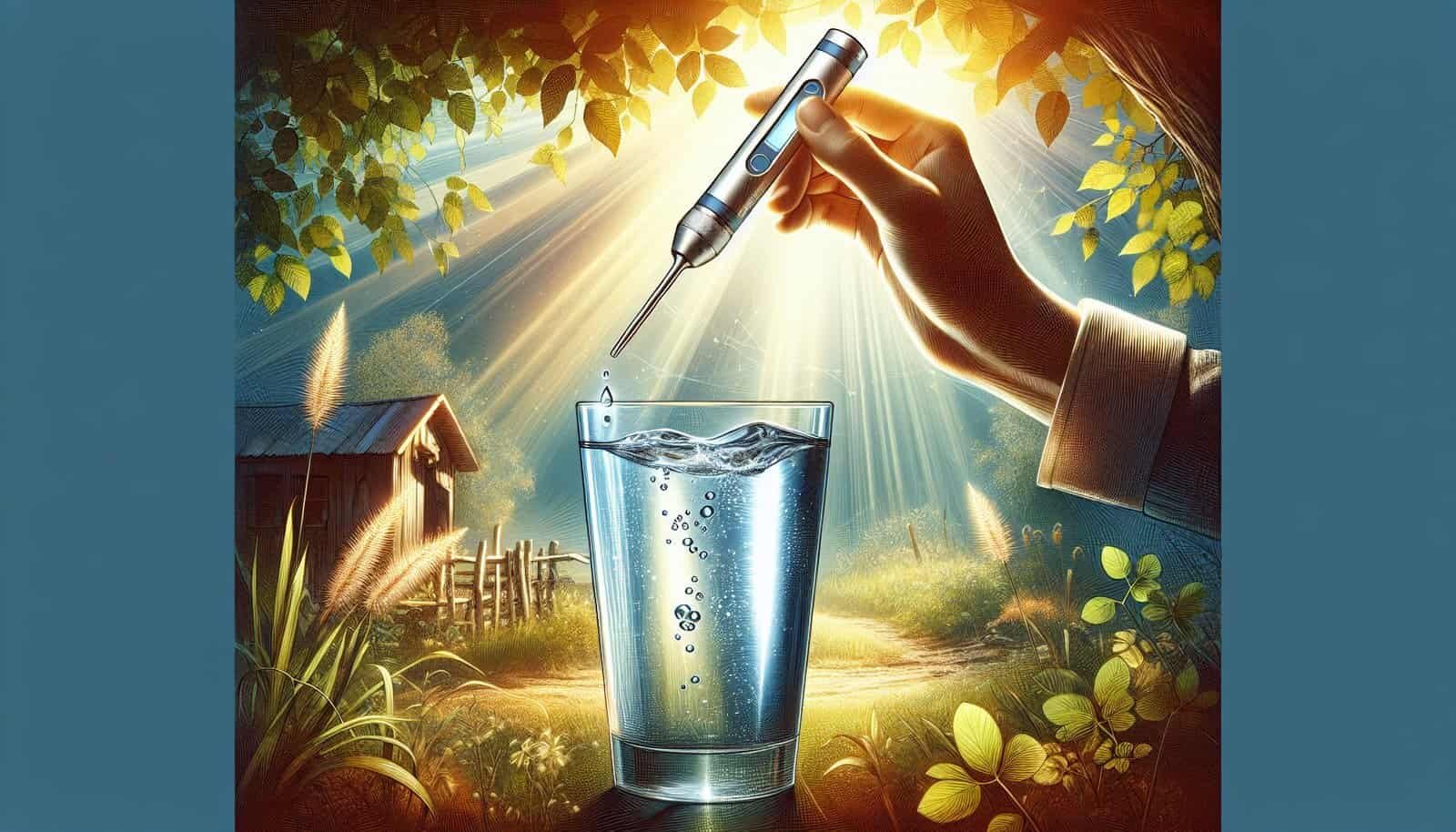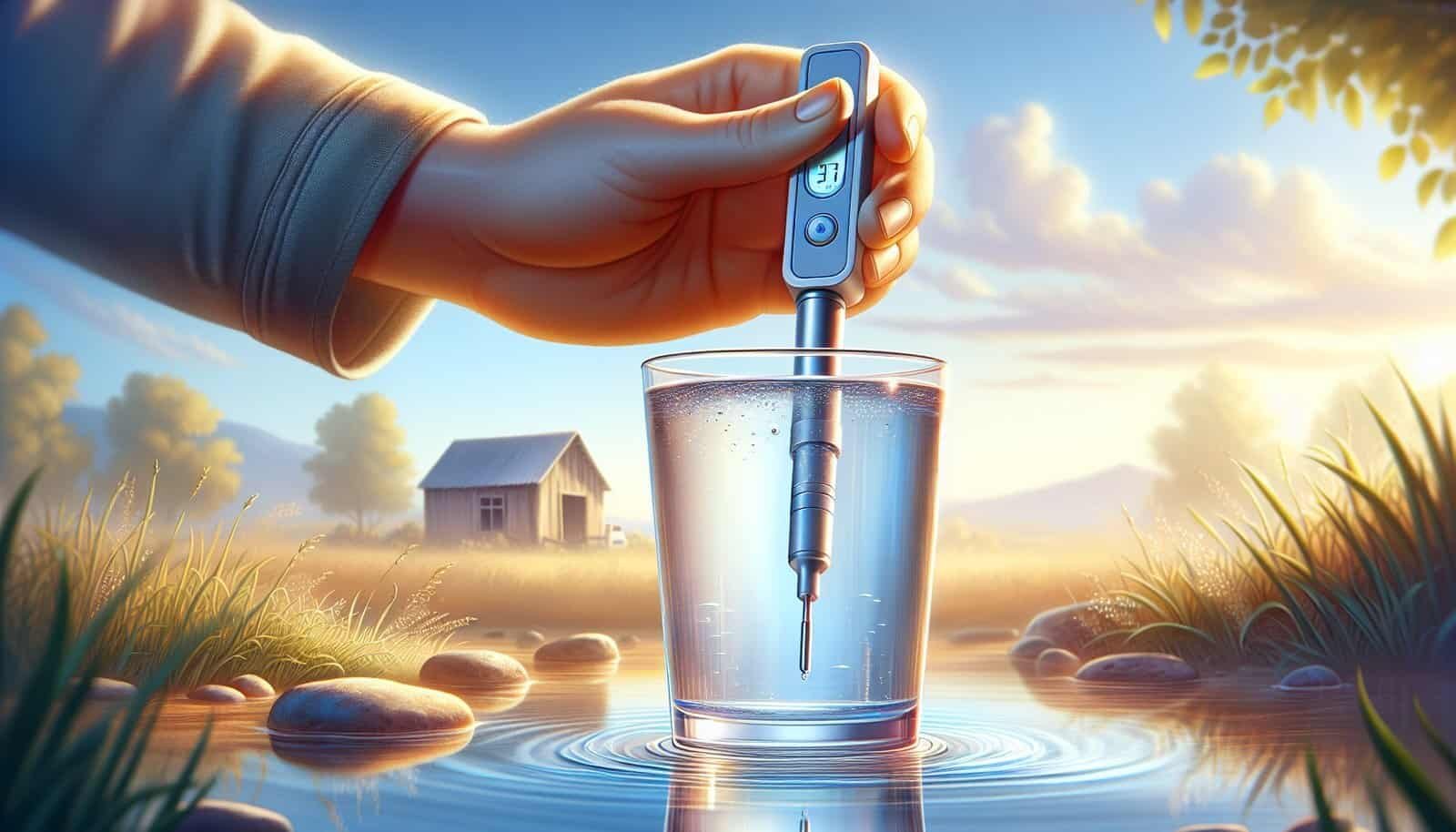Have you ever wondered about the quality of your well water and how pure it truly is? Understanding what comprises your water can seem like a daunting task, especially with terms like Total Dissolved Solids (TDS) being thrown around. But don’t worry—you’re not alone in this. Let’s take a journey together to understand how you can test for TDS in your well water, ensuring it remains healthy and safe for you and your family.

What Are Total Dissolved Solids (TDS)?
Total Dissolved Solids represent the total concentration of dissolved substances in water. These solids comprise inorganic salts and a small amount of organic matter that dissolve in water, which might include calcium, magnesium, potassium, sodium, bicarbonates, chlorides, and sulfates. Understanding TDS in well water is crucial because it can impact the taste, appearance, and overall quality of your water.
Why Should You Test for TDS in Your Well Water?
Testing for TDS in your well water is more important than one might think. High levels of TDS can affect the aesthetic properties of your water, altering its taste and causing discoloration or residue. More critically, it can also affect your health and the health of your appliances by potentially corroding pipes and reducing the lifespan of water heaters and filters. Therefore, regular monitoring can help detect issues early on and maintain your water quality.
How Do TDS Levels Affect Water Quality?
Simply put, TDS levels are a direct measure of the quality and taste of your water. Generally, a TDS level below 300 mg/L is considered excellent, between 300-600 mg/L is good, 600-900 mg/L is fair, and above 900 mg/L prompts action as it is considered very poor. Although high TDS levels may not necessarily indicate harmful compounds, they often point to the presence of unwanted chemicals, minerals, or metals.

Methods to Test TDS in Well Water
There are several methods available to test the TDS levels in your well water. Each has its merits, and your choice depends on the level of detail required and personal preference.
Using a TDS Meter
The most straightforward and popular method of measuring TDS is using a TDS meter. These devices are user-friendly and provide results almost instantly.
Steps to Use a TDS Meter:
- Calibrate: Before measuring, ensure your TDS meter is calibrated according to the manufacturer’s instructions.
- Collect Sample: Pour a sample of well water into a clean container.
- Insert the Meter: Place the TDS meter into the water sample.
- Read the Results: Wait for a few seconds and take note of the result displayed. Measurements are usually in ppm (parts per million).
Laboratory Testing
For a more comprehensive assessment, especially if you suspect specific contaminants, you might consider laboratory testing.
Process of Laboratory Testing:
- Collect Water Sample: Obtain a sample following the lab’s instructions, ensuring the container is clean and sealed properly.
- Send to Lab: Ship your sample to a certified laboratory for analysis.
- Receive Results: Receive detailed results after a few days, often with insights into specific dissolved substances in your water.
Water Testing Kits
Water testing kits are another viable option, giving a mid-point between professional lab testing and the simplicity of a TDS meter.
Using a Water Testing Kit:
- Purchase a Kit: Choose a reliable and well-reviewed kit appropriate for TDS and well water analysis.
- Prepare and Test: Follow instructions, which often include dipping test strips or vials into water samples.
- Compare and Analyze: Match colors against provided charts or follow included steps for chemical analysis.
Comparing the Methods
To help decide which is best for you, see the table below summarizing key differences:
| Method | Cost | Ease of Use | Accuracy | Time Required |
|---|---|---|---|---|
| TDS Meter | Low | Simple | Moderate | Quick |
| Laboratory Testing | High | Moderate | High | Longer |
| Testing Kits | Moderate | Simple | Moderate | Quick |

Interpreting Your TDS Results
Once you’ve acquired your TDS results, what comes next is understanding their significance. A few tips on what to look for:
- Low TDS: Generally indicates excellent water quality, though it might be lacking beneficial minerals.
- Ideal Range: Between 50-150 ppm for a good balance of taste and purity.
- Moderate to High TDS: If levels are above 600 ppm, consider treatment options like reverse osmosis.

Lowering High TDS Levels
If you’ve discovered that your well water has high TDS levels, don’t fret! There are many options available for reducing TDS:
Reverse Osmosis
Reverse osmosis systems are effective at reducing TDS by forcing water through a semipermeable membrane that filters out impurities. This method is efficient but might require professional installation.
Distillation
Another option is distillation, which involves heating water to vapor and then condensing it back into liquid, leaving solids behind. This method can purify water effectively, although it’s slower and uses more energy.
Water Softeners
While primarily used to remove hardness, water softeners can reduce certain minerals contributing to TDS. However, they may not be as effective for all dissolved solids.

Conclusion
Testing for Total Dissolved Solids in your well water doesn’t have to be complex. By understanding what TDS is, why it’s significant, and how to measure it using the right methods, you empower yourself to maintain high water quality. Whether you choose a simple TDS meter, a comprehensive lab test, or a practical testing kit, regular monitoring is key. Should your TDS levels be higher than desired, solutions like reverse osmosis, distillation, and water softeners are available to maintain your water in the best condition possible. Through informed choices in water testing and treatment, you’ll ensure your well water stays both safe and refreshing.
